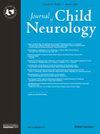Pediatric Epilepsy Genetic Testing Results and Long-term Seizure Freedom.
IF 2
4区 医学
Q3 CLINICAL NEUROLOGY
引用次数: 0
Abstract
Objective: To determine whether there is a correlation of genetic diagnosis/result with long-term seizure freedom in pediatric epilepsy patients. Methods: This was a prospective and retrospective cohort study of children with epilepsy referred for genetic testing at a single center. The primary outcomes were presence and type of genetic diagnosis (pathogenic, benign, or variant of uncertain significance) and patient epilepsy status (seizure free, treatment failure, uncertain). Epilepsy gene panels were the primary method of genetic testing. Results: The prospective cohort had 22 patients followed for >11 years and for whom genetic testing was then performed; the retrospective cohort had 78 patients with previous genetic testing followed for >8 years. In the prospective cohort, one patient each of the seizure free or treatment failure groups had a pathogenic genetic variant; mean Combined Annotation Dependent Depletion (CADD) scores 22 and 24, respectively (P = .62). In the retrospective cohort, there was no difference in the number of variants (P = .97), the variant interpretations (P = .29 ClinVar, P = .39 lab interpretation) or mean CADD scores (P = .29) between the seizure-free, treatment failure, and uncertain epilepsy patients. Whole exome and genome sequencing identified pathogenic variants in 70% of patients with treatment failure but were not performed in seizure-free patients. Significance: Our findings show no correlation of the presence or type of epilepsy gene panel result with long-term seizure freedom in pediatric patients. The yield and specificity of pathogenic variants may be higher using whole exome and whole genome sequencing in patients with treatment-resistant epilepsy. Whole exome and whole genome sequencing, or more targeted understanding of specific variants, may be needed to improve the utility of pediatric epilepsy genetic testing.小儿癫痫基因检测结果与长期癫痫发作自由度。
目的确定基因诊断/结果与小儿癫痫患者长期癫痫发作自由度是否相关。方法: 这是一项前瞻性和回顾性队列研究:这是一项前瞻性和回顾性队列研究,研究对象是在一个中心接受基因检测的癫痫患儿。主要结果是基因诊断的存在和类型(致病、良性或意义不确定的变异)以及患者的癫痫状态(无发作、治疗失败、不确定)。癫痫基因面板是基因检测的主要方法。结果:前瞻性队列中有 22 名随访时间超过 11 年、随后进行了基因检测的患者;回顾性队列中有 78 名曾进行过基因检测、随访时间超过 8 年的患者。在前瞻性队列中,无癫痫发作组和治疗失败组各有一名患者存在致病基因变异;平均联合注释依赖性缺失(CADD)评分分别为 22 分和 24 分(P = .62)。在回顾性队列中,无癫痫发作组、治疗失败组和不确定癫痫患者之间的变异数量(P = .97)、变异解释(P = .29 ClinVar,P = .39 lab interpretation)或平均 CADD 评分(P = .29)均无差异。全外显子组和基因组测序确定了70%治疗失败患者的致病变异,但未在无癫痫发作患者中进行。意义重大:我们的研究结果表明,癫痫基因面板结果的存在或类型与儿科患者长期无癫痫发作没有相关性。对于治疗耐药的癫痫患者,全外显子组和全基因组测序的致病变异率和特异性可能更高。要提高儿科癫痫基因检测的实用性,可能需要进行全外显子组和全基因组测序,或更有针对性地了解特定变异。
本文章由计算机程序翻译,如有差异,请以英文原文为准。
求助全文
约1分钟内获得全文
求助全文
来源期刊

Journal of Child Neurology
医学-临床神经学
CiteScore
4.20
自引率
5.30%
发文量
111
审稿时长
3-6 weeks
期刊介绍:
The Journal of Child Neurology (JCN) embraces peer-reviewed clinical and investigative studies from a wide-variety of neuroscience disciplines. Focusing on the needs of neurologic patients from birth to age 18 years, JCN covers topics ranging from assessment of new and changing therapies and procedures; diagnosis, evaluation, and management of neurologic, neuropsychiatric, and neurodevelopmental disorders; and pathophysiology of central nervous system diseases.
 求助内容:
求助内容: 应助结果提醒方式:
应助结果提醒方式:


